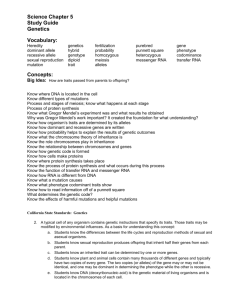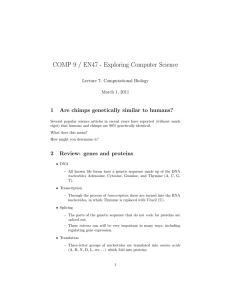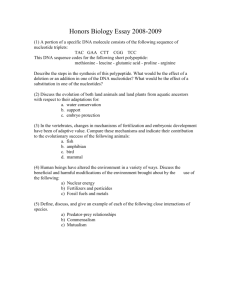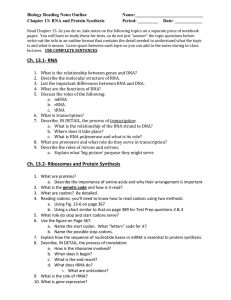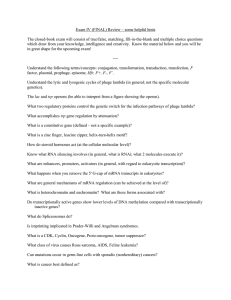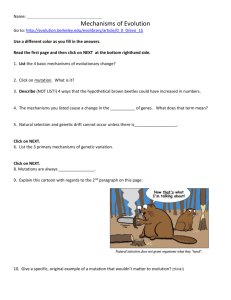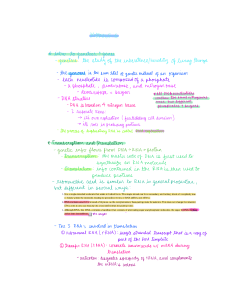7. Cellular Control
advertisement
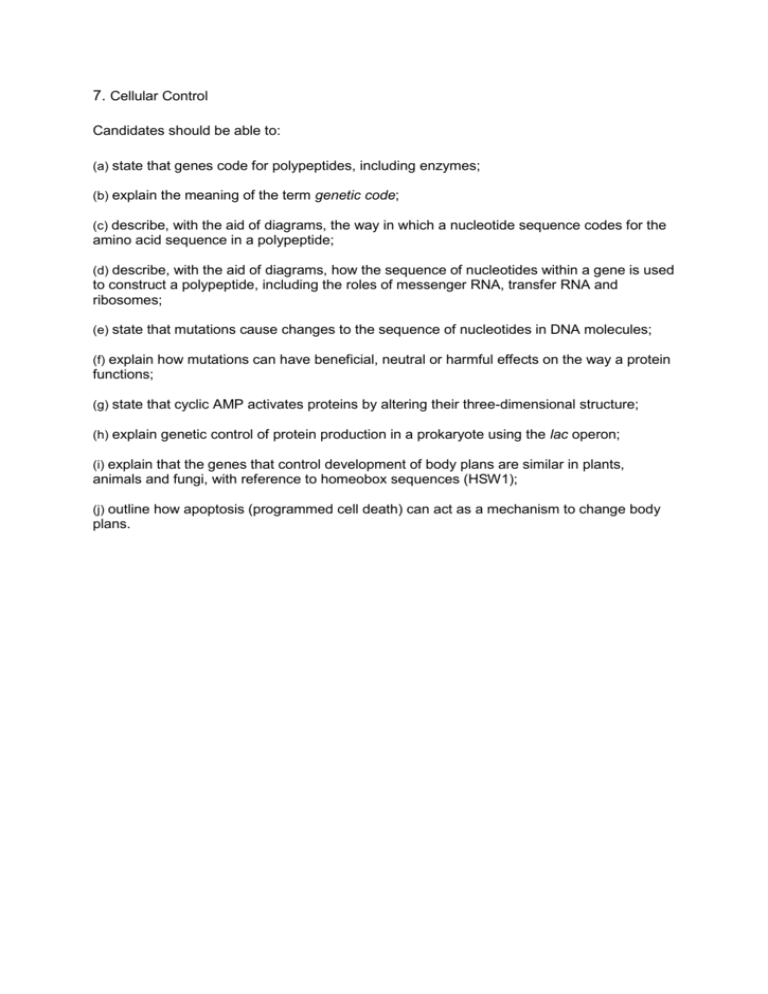
7. Cellular Control Candidates should be able to: (a) state that genes code for polypeptides, including enzymes; (b) explain the meaning of the term genetic code; (c) describe, with the aid of diagrams, the way in which a nucleotide sequence codes for the amino acid sequence in a polypeptide; (d) describe, with the aid of diagrams, how the sequence of nucleotides within a gene is used to construct a polypeptide, including the roles of messenger RNA, transfer RNA and ribosomes; (e) state that mutations cause changes to the sequence of nucleotides in DNA molecules; (f) explain how mutations can have beneficial, neutral or harmful effects on the way a protein functions; (g) state that cyclic AMP activates proteins by altering their three-dimensional structure; (h) explain genetic control of protein production in a prokaryote using the lac operon; (i) explain that the genes that control development of body plans are similar in plants, animals and fungi, with reference to homeobox sequences (HSW1); (j) outline how apoptosis (programmed cell death) can act as a mechanism to change body plans.
